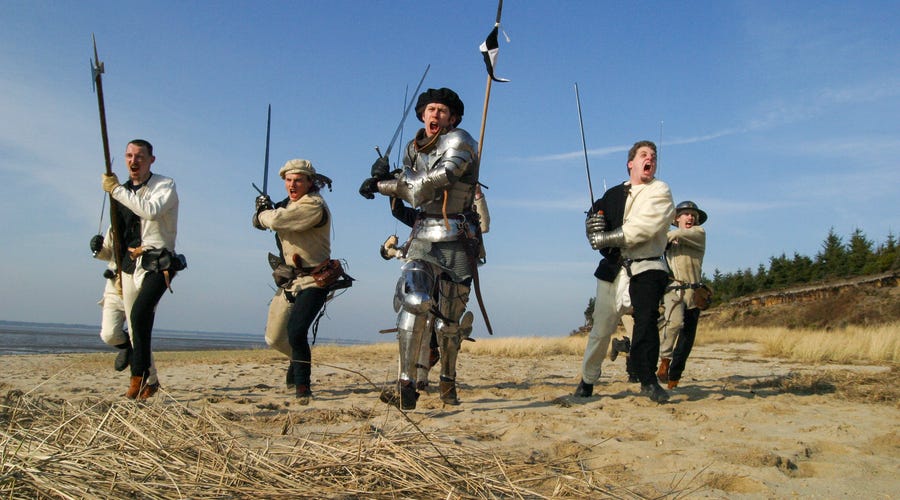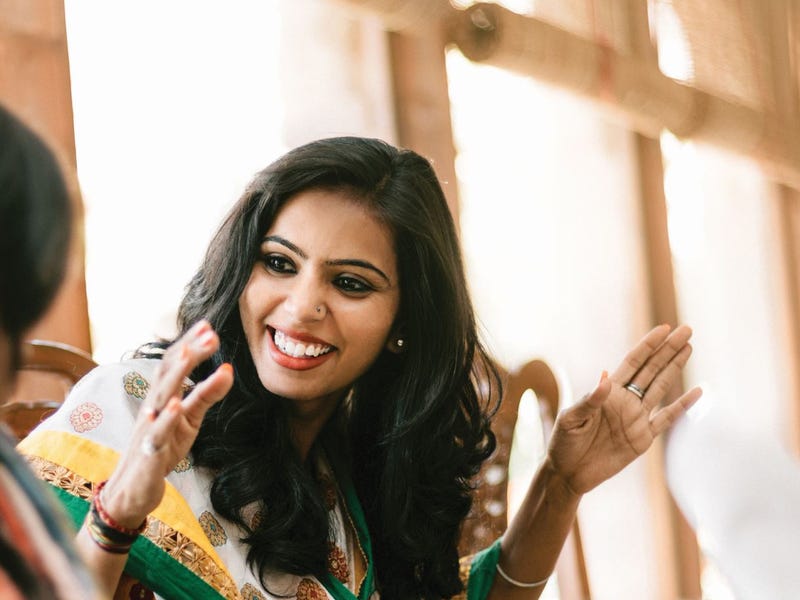
20 of our favorite fictional languages from brilliant fantasy worlds
Author: Karolina Assi
Maybe learning everyday languages isn’t really your thing. Or, maybe you already speak a few and want to learn a language hardly anyone speaks to impress everyone around you. Or, perhaps you want to go that extra step to completely immerse yourself in a make-believe world that can be found in a book or on-screen? If so, you can have a lot of fun learning fictional languages.
The authors of books, movies, and TV shows often go the extra mile to immerse fans into the story by not only creating a completely unreal and exciting world of fantasy but also by making it seem real. Some authors, like George R. R. Martin or J. R. R. Tolkien, even come up with fantasy languages that the characters in their books speak.
So, if you’re a Game of Thrones, Lord of the Rings, or Star Trek fan, you’re in for a treat because, in this article, we’ll go over the top 20 made-up languages from fantasy worlds that sound real.

What are fictional languages?
A fictional language, also known as a fantasy language, is a language created by an author, often for the purpose of interest or entertainment (such as in speculative or fantastical fiction).
They don't exist in the real world. These languages are commonly created by writers, filmmakers, and game developers to add depth to their fictional worlds (also called constructed worlds, or “conworlds” for short). Most often, you can encounter fantasy languages in movies (Klingon in Star Trek), TV shows (Dothraki in Game of Thrones), and video games (Dovahzul in Skyrim).
These fantasy languages also help writers create alien worlds that might not be possible in real life — such as Middle Earth in J.R.R. Tolkien's The Lord of the Rings or the Hutts in Star Wars.
That’s not to say that these make-believe languages are a bunch of nonsense - they actually have a logical linguistic structure. They must be coherent and have grammatical rules to make them make sense.
What are conlangs (constructed languages)?
Constructed languages are designed by people who want to create a new language for a specific purpose.
Fictional languages are also sometimes called constructed languages or conlangs. While they fall under the category of constructed languages - because they have been created for a specific purpose - the opposite isn’t necessarily true.
A constructed language doesn’t need to be created for a fictional novel or movie - it can also be created with a functional purpose. The earliest constructed languages were created for religious, philosophical, or other real-world purposes. For example, Esperanto is a constructed language created to develop a universal language as a communication tool between nations.
With time, authors started creating constructed languages to complement their works of fiction. So, yes - fictional languages are constructed languages, but constructed languages aren’t necessarily fictional.
If you’re thinking about creating your own conlang – (respect!) – check out conlang.org, from the Language Creation Society.
Fun facts about conlangs
Here are some fun facts about conlangs you might find interesting.
- There are about 312 constructed languages.
- The oldest conlang we know of is Lingua Ignota, created in the 12th century by abbess Hildegard von Bingen.
- The earliest fictional language ever created by Utopian language in Utopia by Thomas More in 1516.
- There are 12 fantasy languages created for the Lord of the Rings, but only two of them have been developed enough to be spoken in a conversation.
- Klingon from Star Trek was created by a linguistics teacher from the University of California.
- The Dothraki language was created by a linguist named David J. Peterson.
- Dothraki has around 4,000 functional words.
- Valyrian has around 2,000 functional words.
- A guidebook exists for learning the Dothraki language, Living Language Dothraki, released in October 2014, produced by the creator of this fantasy language.
- Learn how to say hello in different fantasy languages here. (As well as real ones!)
- Learn how to say goodbye in various fictitious conlangs here. (As well as real ones!)
20 top fictional languages that we forgot were fake
When you think of fictional languages, you probably think of Klingon, Elvish, and Dothraki. But there are plenty more out there to be discovered.
But did you ever wonder where they came from? What’s the story behind them? And how did they get those crazy-looking letters?
Here are the top 20 fictional languages that we forgot weren't real.
1. Dothraki
Language created by: David J. Peterson
Book/TV series: A Song of Ice and Fire / Game of Thrones
Author: George R.R. Martin
The Dothraki language is a fictional constructed language in George R. R. Martin's A Song of Ice and Fire novels and the Game of Thrones TV series.
In the fictional world of A Song of Ice and Fire, the Dothraki (sometimes referred to as Dothraxa) are a nomadic horse-riding people who live beyond the "Painted Mountains" in what is known as the Dothraki Sea. They speak a unique language called Dothraki.
Initially, Dothraki didn’t extend beyond a few phrases created by George R.R. Martin in his novels. The full structure of the Dothraki language was created by a linguist named David J. Peterson - the same one who also invented Valyrian - for the purpose of the TV show.
Dothraki was inspired by a mix of Spanish and Arabic sounds and made into a language that would be easy to learn for the actors. When constructing the language, Peterson focused on making the language fully tailored to the Dothraki culture - which is why the Dothraki language doesn’t have any words for things that the Dothraki do not need or use.
That’s why the Dothraki language has 14 different ways to say “horse” but no word for “thank you.” Here’s a table of some Dothraki words and phrases we could find:
| English | Dothraki |
| Moon of my life. | Yer jalan atthirari anni. |
| My sun and stars. | Shekh ma shieraki anni. |
| Blood of my blood. | Qoy Qoyi |
| I love you. | Anha zhilak yera. |
| With respect. | M’athchomaroon! |
| Thank you. | San athchomari yeraan! |
| Happy birthday. | Asshekhqoyi vezhvena! |
| The stars are charging for you. | Shieraki gori ha yeraan! |
| Horse | Hrazef |
2. Valyrian
Language created by: David J. Peterson
Book/TV series: A Song of Ice and Fire / Fire and Blood / Game of Thrones
Author: George R.R. Martin
Aside from Dothraki, David J. Peterson also created High Valyrian for Season 3 of Game of Thrones. Before Peterson developed Valyrian into a full-fledged language, there were only 56 Valyrian phrases in the Game of Thrones books. Currently, Valyrian has over 2,000 functional words. You can refine your pronunciation of some common High Valyrian phrases here.
Valyrian also has quite a complex grammatical structure. Aside from verb conjugations, it has four gender classes (lunar, solar, terrestrial, and aquatic), four grammatical numbers (singular, plural, collective, and paucal), and eight noun cases (nominative, accusative, dative, genitive, vocative, locative, instrumental, and comitative).
Here’s a table with some popular Valyrian words and expressions we could find:
| English | Valyrian |
| All men must die. | Valar Morghulis. |
| Dragon fire. | Dracarys. |
| A dragon is not a slave. | Zaldrīzes buzdari iksos daor. |
| All men must serve. | Valar Dohaeris. |
| Winter is here. | Sōnar mastan. |
| Hold the door. | Nerni ōrēs. |
| I will take what is mine. | Ñuhor līr gūrēnna, |
| The night is dark and full of terrors. | Bantis zōbrie issa se ossȳngnoti lēdys. |
| I love you. | Avy jorrāelan. |
Here’s a video of David J. Peterson reviewing people speaking Dothraki and Valyrian:
Game of Thrones Language Creator Reviews People Speaking Valyrian and Dothraki | Vanity Fair
3. Quenya
Language created by: J.R.R. Tolkien
Book/Movie: The Hobbit / The Lord of the Rings
Author: J.R.R. Tolkien
Since J.R.R Tolkien is a linguist himself, he went ahead and constructed not one, but TWO languages for the elves in this novel series The Hobbit and The Lord of the Rings. Quenya is one of the two elvish languages spoken by the High Elves of Eldamar.
Quenya was inspired by a mix of Finnish, Greek, and Latin. As a nominative-accusative language, Quenya has a complex grammatical structure. Its nouns are declined into ten cases: the nominative, accusative, genitive, dative, instrumental, possessive, locative, allative, ablative, and a tenth case, sometimes called the "respective."
Here’s a list of some Quenya words and phrases:
| English | Quenya |
| The day has come! Behold, people of the Eldar and Fathers of Men, the day has come! | Utúlie'n aurë! Aiya Eldalië ar Atanatarni, utúlie'n aurë! |
| The night is passing! | Auta i lóme! |
| The will of the Valar will be done. | Valar valuvar |
| How did the language of Elves change? | Manen lambë Quendion ahyanë? |
| Welcome. | Alatulya. |
| What’s your name? | Man esselya ná? |
| Pleased to meet you. | Vandë omentaina. |
| Have a nice day | Nai aurelya nauva mára! |
| Do you speak Quenya? | Ma istal quet' Eldarin? |
| I love you. | Melinyel |
Here’s a Quenya tutorial in 8 minutes:
Learn To Speak Quenya In 8 Minutes | Tolkien's Elvish
4. Sindarin
Language created by: J.R.R. Tolkien
Book/Movie: The Hobbit / The Lord of the Rings
Author: J.R.R. Tolkien
Sindarin is another one of the Elvish languages in The Lord of the Rings. Sindarin is the language spoken by the Grey Elves of Talarin, and it’s based on a mix of Welsh and Finnish - two languages studied by J.R.R Tolkien.
Quenya and Sindarin are two of over 15 languages spoken by the Elves in The Lord of the Rings novel series. Here are some phrases and expressions in Sindarin you might enjoy:
| English | Sindarin |
| A star shines on the hour of our meeting. | Êl síla erin lû e-govaded 'wîn. |
| Welcome! | Aldol! |
| At last! | Na vedui! |
| Come with me/Follow me. | Aphado nin. |
| You are welcome here. | Gi nathlof hí. |
| Farewell. | Novaer. |
| My heart shall weep until I see you again. | I faer nîn *nínia *aden a-govedinc. |
| Until we meet again. | Na lû e-govaded 'wîn. |
| Do you speak Elvish? | Pedil edhellen? |
| Don’t be afraid. | Av-'osto. |
Here’s a Sindarin tutorial in 8 minutes:
Learn To Speak Elvish In 8 Minutes | Basics of Sindarin
5. Simlish
Language created by: The Sims creator, Will Wright
Video game: The Sims
Author: Will Wright
Simlish is the language spoken by The Sims. To many, it sounds like complete gibberish - and according to its author, Will Wright, it is, indeed, a mash-up of gibberish and real words from different languages.
Many people think Simlish is a mix of Irish, Tagalog, Ukrainian, and Navajo words. It is said the voice actors of the game improvised most of the sounds and their emotional nuances

6. Newspeak
Language created by: George Orwell
Book: 1984
Author: George Orwell
Newspeak is a fictional language that was spoken by the totalitarian nation of Oceania in George Orwell’s book, 1984. It is a language officially created and accepted by the fictitious ruling party as a new way of communication.
The purpose of Newspeak was to create a form of speech that would meet the ideological requirements of the fictional state of Oceania.
7. Na’vi
Language created by: Paul Frommer
Movie: Avatar
Author: James Cameron
Na’vi is the language spoken by the big blue beings - the Na’vi - in James Cameron’s famous blockbuster, Avatar in 2009. James Cameron wanted the Na’vi to be a fully developed concept and decided to create a language for them.
Cameron created the first 30 words of the Na’vi language. To create the rest, he turned to a linguist named Paul Frommer, who helped him create an extended vocabulary and a grammar structure of the Na’vi language. It is said that it took around six months to create the full structure of the language. Check out some interesting conversational words from this fascinating fake language below.
| English | Na’vi |
| Hello. | kaltxì |
| I see you. | oel ngati kameie |
| Thanks. | irayo |
| I love you. | nga yawne lu oer |
| See you soon. | kìyevame |
8. Klingon
Language created by: Mark Okrand
Movie/TV show: Star Trek
Author: Robert Wise
Klingon is the most developed fictional language. It was created in 1979 as the language spoken by the warrior race Klingon in the TV show Star Trek. The linguist Mark Okrand has created the language to be fully functional, to the point where fans use it to write songs and say their wedding vows. What’s more, Shakespeare’s Hamlet has been fully translated into Klingon.
Klingon has over 3,000 words and a fully developed grammatical structure. There’s even an official Klingon Language Institute where you can learn Klingon! Here are a few Klingon phrases and words you might find interesting.
| English | Klingon |
| Is this seat taken? | quSDaq ba’lu’’a’? |
| Curse well! | pe’vIl mu’qaDmey |
| Where’s the bathroom? | nuqDaq ‘oH puchpa’’e’? |
| Where’s the bar? | nuqDaq ‘oH tach’e’? |
| Do they serve Earth food? | tera’ngan Soj lujab’a’? |
| How are you? | bIpIv'a'? |
| Cheers! | 'IwlIj jachjaj |
| I understand. | jIyaj |
| Do you speak a language other than Klingon? | tlhIngan Hol 'oHbe'bogh latlh Hol'e' DajatlhlaH'a'? |
| Would you like to dance with me? | mamI' DaneH'a'? nItebHa' mamI' DaneH'a'? |
9. Alienese
Language created by: Matt Groening
Cartoon: Futurama
Author: Matt Groening
Alienese, also called Alien language, is simply a coded language. If you’re good at math, it should be pretty easy for you to learn! This language was created for hidden jokes on the animated show called Futurama to see if fans could decipher it.
Initially, it had a substitution alphabet with 26 characters corresponding to the English alphabet. However, with time, it was developed into a more complex form using numbers.
Alienese is the language spoken by the alien species Nibblonian, the native inhabitants of the Planet Eternium.

10. Lapine
Language created by: Watership Down fans
Novel/Movie/TV show: Watership Down
Author: Richard Adams
Lapine is the language spoken by the rabbits in the novel and animated movie Watership Down. Watership Down is a tale of a colony of rabbits looking for a new home. Lapine is meant to sound fluffy, and its name comes from the French word for “rabbit.”
Initially, Richard Adams only created a few words of Lapine for the purpose of the movie in 1972. However, since then, fans have developed it into a fully functional language with extended vocabulary and a grammatical structure.
11. Atlantean
Language created by: Mark Okrand
Movie: Atlantis: The Lost Empire
Authors: Tab Murphy, Gary Trousdale, and Kirk Wise
Atlantean is the language spoken by the people of Atlantis in the 2001 Disney movie Atlantis: The Lost Empire. The authors of the movie wanted the Atlanteans to have their own unique language, so they hired a renowned linguist, Mark Okrand, to develop it.
Since the story of Atlantis dictates that most real-world languages are derived from Atlantean, Mark Okrand created this language based on a mashup of different, real languages. Atlantean has its own alphabet.
12. Vulcan
Language created by: Mark Okrand
Movie/TV show: Star Trek
Author: Robert Wise
Vulcan is another one of the famous Star Trek’s constructed languages. While Klingon is the most developed one, Vulcan is the first to appear in the movies. It is spoken by the Vulcan from the planet Vulcan.
Initially, the actors spoke the words in English, which were later dubbed into Vulcan words that were created to match the actors’ mouth movements. The actor James Doohan - the one who played Scotty - was the first to devise Vulcan words to be dubbed during the 1979 movie Star Trek: The Motion Picture.
The language was later developed into a fully functional language by Mark Okrand - the same guy who created Klingon.
Here you can listen to the original Star Trek intro dubbed in the Vulcan language:
Original Star Trek intro in the Vulcan language
13. Huttese
Language created by: Ben Burtt
Movie: Star Wars
Author: George Lucas
The Star Wars universe has several constructed languages for its alien species, and Huttese is one of the most famous ones. Huttese is spoken by Jabba the Hutt and his species, the Hutts - a jumbo species of crime lords.
Huttese was created by the sound designer Ben Burtt for Jabba’s appearance in the film Return of the Jedi in 1983. Together with Jabba’s actor, Larry Ward, Ben Burtt created the Huttese language based on the sounds from the Inca’s language, Quechua (which is still spoken by over 8 million people in the Andes region).
14. Barsoomian
Language created by: Paul Frommer
Movie: John Carter of Mars
Author: Edgar Rice Burroughs
Barsoomian is the language of the Barsoomians - the humanoids that inhabit the planet Mars in Edgar Rice Burroughs’ novels. The language had only 400 words and some descriptions in Burroughs novels and was fully developed by the linguist Paul Frommer - the same one that created the Na’vi language for Avatar - for the movie John Carter of Mars in 2012.
15. Kryptonian
Language created by: E. Nelson Bridwell
Comics: Superman
Author: Jerry Siegel
If you’re a Superman fan, we don’t have to tell you about the language of Krypton - Superman’s birth planet. The inhabitants of Krypton speak Kryptonian - or Kryptonese.
The language first appeared in the Superman comics as incomprehensible squiggles and was later developed by E. Nelson Bridwell into a 118-letter alphabet. In 2000, DC Comics introduced a transliteration of the alphabet with corresponding English letters. A more complex version of the Kryptonian language appeared in the TV show Smallville.
16. Dovahzul
Language created by: Adam Adamowicz
Video game series: The Elder Scrolls V: Skyrim
Author: Bethesda Game Studios
Dovahzul is the language of the dragons, which first appeared in The Elder Scrolls V: Skyrim in 2011. In case you don’t know it already, Skyrim is a famous action role-playing video game developed by Bethesda Game Studios. The name of the language comes from its word for “dragon”: “dovah” means “dragon,” and “dovahzul” means “dragon’s voice.”
The language has its own alphabet, and it’s written from left to right. It is said that it’s based on the oldest form of writing, the Cuneiform script.
This is what a text written in dovahzul looks like:

17. Goa’uld
Movie/ TV show: Stargate/Stargate SG-1
Stargate fans know that the Goa’uld are nasty symbiotes from the planet P3X-888 in the Milky Way galaxy. They’re known for taking over their host’s body completely.
The Goa’uld communicate in the Goa’uld language, which is based on Egyptian hieroglyphics. Of course, in the Stargate series, the story is flipped - it is said that the Egyptian hieroglyphics are based on the Goa’uld language (which we know, of course, isn’t true in real life).
18. Trigedasleng
Language created by: David J. Peterson
TV show: The 100
Author: Kass Morgan
Trigedasleng, also called Trig, is the language of the Grounder people in the CW series, The 100. The Grounder people are survivors of the nuclear apocalypse on Earth.
The creator of the Trigedasleng language, linguist David J. Peterson (yes, the same one that created the Dothraki and Valyrian languages for Game of Thrones), says that it has evolved from English. Trigedasleng can be translated as the “forest language.” In the series, many Grounder clans speak this language but can also communicate in English.
Here’s a video of Lexa from The 100 speaking Trigedasleng:
Lexa Speaking Trigedasleng (Language of the Grounders)
19. D’ni
Language created by: Richard A. Watson
Video game series: Myst/Riven
Author: Cyan Inc.
D’ni is the language spoken by the D’ni people in the video game series Myst produced by Cyan Inc. The D’ni language has its own alphabet, and its words and phrases have been used throughout the game to challenge the players.
You can learn more about the grammar and vocabulary of the D’ni language from the Guild of Archivists.
20. Tenctonese
Language created by: Van Ling/Kenneth and Juliette Johnson
Movie/TV show: Alien Nation
Author: Alan Dean Foster
The Tenctonese is the language spoken by an alien species in the movie and FOX TV show Alien Nation. Surprisingly, there are two versions of this language - one created for the movie by Van Ling and another created for the TV show by the father-daughter duo Kenneth and Julliette Johnson.
The Tenctonese language in the movie was based on a combination of Chinese, Samoan, and German words. On the other hand, the Tenctonese language for the TV show was created from English words spelled backward or rearranged into different syllable combinations.
Fonas Chek!
It’s time to say goodbye (fonas chek in dothraki)! Let’s take a moment and appreciate all the amazing fictional and fantasy languages out there! They have helped us to feel truly immersed in the world of our favorite movies, TV shows, or video games.
Despite the fact that these fake languages are simply creations of the imagination, they do function as full-fledged languages, so perhaps we should even consider them real. While they may lack the same level of complexity and intricacy as natural languages, they are crafted with thought and purpose to suit the specific needs of their respective worlds.
And whenever you're ready to leave the fantasy worlds and their adventures, check out this article on the most spoken languages in the world, and learn about more languages and culture on our language blog.
Want to learn real languages in a fictional world? Discover the best books to learn about languages and cultures here.


